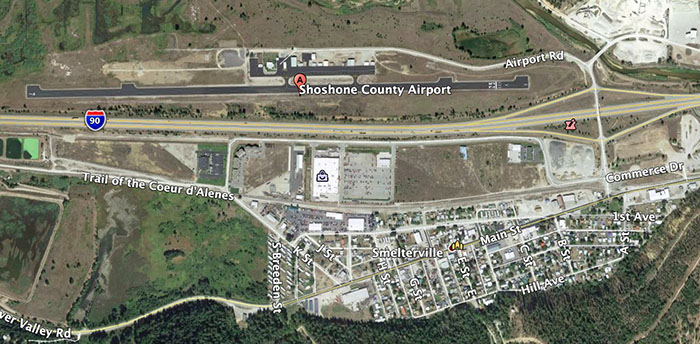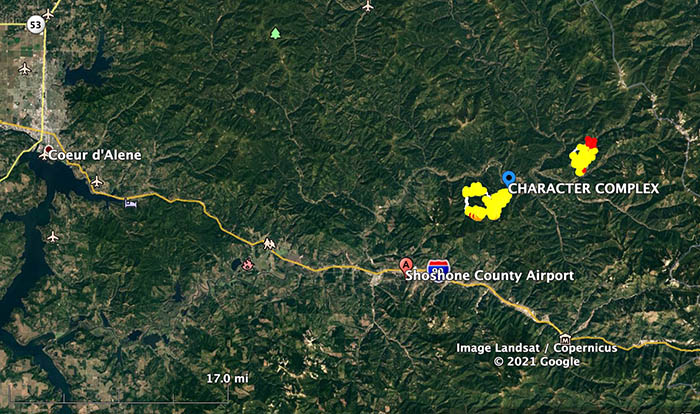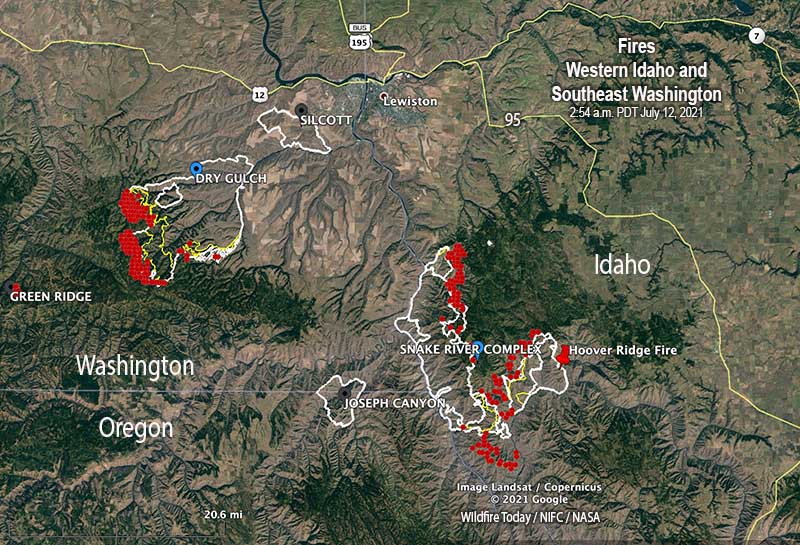5:08 p.m. PDT Sept. 13, 2021

President Biden visited two locations in the West Monday to gather information about the current wildfire situation. His first stop was in Boise where he became the first US President to visit the National Interagency Fire Center since it was created 50 years ago.
During a tour of NIFC he talked with a group of smokejumpers and the President was seen holding a pulaski fire tool. Later, sitting in front of what looked like shelves of parachutes he met with Idaho Governor Brad Little, George Geissler of the National Association of State Foresters, and Grant Beebe, BLM’s Assistant Director for Fire and Aviation. The President said Senators Ron Wyden and Jeff Merkley intended to be there but their flight was cancelled due to weather.

Mr. Biden praised wildland firefighters for the work they do and reiterated that he is committed to raising their pay. The full text of his public remarks at Boise are below, but here is an excerpt:
The fact is that we’re in a situation where too many memorials are — have been held. And I’ve directed my administration to provide for pay bonuses and incentives to ensure every federal firefighter — because that’s the only authority I have — makes at least $15 an hour. I mean, they should make a hell of a lot — heck of a lot more, but at least $15 an hour. And I’m committing to work with Congress to raise the pay gap for federal wildland firefighters.
And so, you know, believe it or not, there’s massive shortage of fire hoses. I think you all get it. But the idea that we went into this fire season with a shortage of fire hoses — that’s all I heard from my guys back East and in the Midwest: no fire hoses.
Well, fortunately, they thought a long time ago about a thing called the National Defense Act. And what I was able to do — excuse me, the Defense Production Act.
And I was able to restart production of bringing — bringing a lot of people back to work, delivering 21,920 new feet of fire hose in the frontlines, putting a company back to work that was out of business that stopped — stopped manufacturing.
The Associated Press reported Monday that the administration’s use of the Defense Production Act helped an Oklahoma City nonprofit called NewView Oklahoma, which provides the bulk of the U.S. Forest Service’s hose, obtain needed supplies to produce and ship 415 miles of fire hose. If that is correct, two zeros should be added to the 21,920 feet mentioned by the President, making it 2,192,000, which is 415 miles.

About two hours after Air Force One landed, it departed for Mather Air Force Base near Sacramento. After landing he visited California’s Office of Emergency Services and received a briefing on the wildfires in the state. At one point a map of the Caldor Fire was displayed on a large screen. The plan was for the President to then take an aerial tour of a fire in El Dorado County, the location of the huge 210,000-acre Caldor Fire. And following that, more public remarks about wildland fire.


Below is the text of the Presidents public remarks while at NIFC September 13, 2021, provided by the White House:
12:08 P.M. MDT
MR. BEEBE: Mr. President, on behalf of the wildland fire community, I’m proud to welcome you to the National Interagency Fire Center — or NIFC, for short. And we always say NIFC is a place, not an organization.
THE PRESIDENT: (Laughs.)
MR. BEEBE: We’re incredibly proud of it.
Thank you for coming. We’re honored you’re the first President to visit in the 50-year history of the Fire Center, and it’s quite an honor.
I’m Grant Beebe. I’m the Bureau of Land Management’s Assistant Director for Fire and Aviation. And speaking for all the NIFC partners, I’d like to thank you particularly for being here and for your genuine and intense interest in wildland fire management.
I just want to point out: This is a coalition of partners. We have a team here. We have National Park Service, DOD, Fish and Wildlife Service, Bureau of Indian Affairs, National Association of State Foresters representing the states, FEMA, U.S. Fire Administration, and, of course, U.S. Forest Service, Fish and Wildlife Service.
I think I got them all; somebody will correct me. Oh, and of course, National Weather Service — one of the original partners here at NIFC. The inception of this was a Forest Service, BLM, NOAA, Fish and Wi- — National Weather Service operation.
So, we’re incredibly proud of it. We’re so proud to have you here.
NIFC was created 50 years ago, and it is the original and durable model for interagency, intergovernmental coordination. Extremely lengthy, intense, and damaging fire seasons like the one we’re experiencing now reinforce the purpose of places like this.
Through the hard work, ingenuity, and persistence of generations of fire professionals, wildfire response across the nation is unified, cooperative, and professional. And I’ll say that we all stand on the shoulders of giants. We inherited this place, and we’re trying to keep it going.
In wildland fire, there’s no one community, agency, Tribal organization that has enough resources to manage all of its fires. Fires don’t know jurisdictional boundaries, and we try to ignore jurisdictional boundaries ourselves. One of our speakers will speak to that particularly.
But the kind of fires we’re experiencing these days — the kind of long-duration, massive, destructive fires we’ve witnessed in recent years in places like California, Oregon, Washington, Colorado, and, unfortunately, for Governor Otter [sic] this year, in Idaho — they’re teaching us that we need to maybe change the way we’re doing business.
Continue reading “President Biden visits National Interagency Fire Center”










